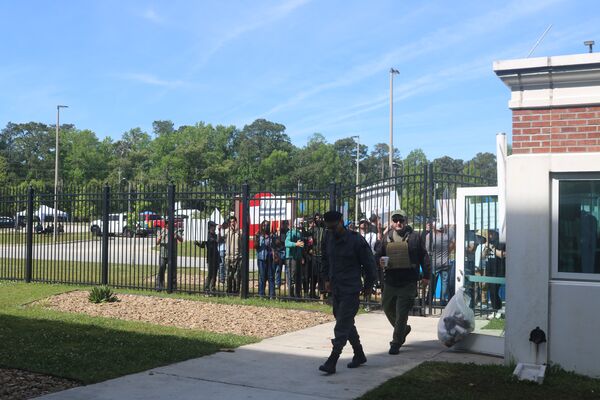
Role players pretend to protest outside a building in Camp LeJeune, North Carolina. The protesters simulated tensions in a foreign country that could lead to a non-combatant evacuation of the building, which represented a consulate in the 26th MEU's training exercise. (Janes/Meredith Roaten)
From rapidly deploying from US Navy ships to keeping track of civilians, the US Marine Corps (USMC) wants to keep its non-combatant evacuation operations (NEO) running smoothly through its latest training exercise in Camp LeJeune, North Carolina.
The training in late April 2023 was an opportunity to practice more tightly integrating naval assets into USMC operations and maintaining the short timelines that a Marine Expeditionary Unit (MEU) can provide, USMC leaders told reporters on April 24. The exercise comes as US forces started evacuations in Sudan after fighting ramped up between rival military groups.
A foreign “consulate” at Camp LeJeune, North Carolina, was surrounded by protesters throwing foam bricks, waving flags, and chanting anti-US slogans. Around the back, marines from the 26th MEU were running a simulated Evacuation Control Center (ECC) that was processing and caring for role players who wanted to flee the made-up country.
“The exercise is pretty much mirrored with what was going on” in Sudan, said Jonathan Berger, a Department of State adviser to Marine Forces Special Operations Command (MARSOC). The tension in both the simulated country and in real life ramped up quickly over the course of about a week, and the main building in the simulation hosted about the same number of US government personnel who had to be protected and potentially evacuated.
Looking to read the full article?
Gain unlimited access to Janes news and more...
